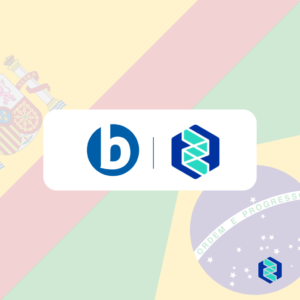
Data integrity in pharmacovigilance is one of the main points for the success of adverse event records in the sector, but many companies face difficulties in maintaining data quality.
The question is: how to solve it? How can data integrity be maintained and how does this enable pharmacovigilance to fulfill its purpose? That’s what we’re going to talk about in today’s article!
The importance of pharmacovigilance
Pharmacovigilance is an indispensable sector within the pharmaceutical industry. It enables companies with registered medicines to identify, analyze, and prevent adverse events and other occurrences related to the use of their products.
The primary focus of pharmacovigilance is on ensuring consumer safety, as well as the efficacy and quality of medicines. This process helps in identifying adverse reactions, events caused by deviations in medicine quality, therapeutic ineffectiveness, medication errors, misuse, poisoning, and drug interactions.
The information gathered through pharmacovigilance is crucial for the continuous improvement of products and their usage instructions, benefiting both health professionals and patients. Companies establish processes within pharmacovigilance to receive, store, and report notifications to regulatory authorities such as ANVISA. It’s important to note that these reports often contain sensitive patient data.
Technology plays a pivotal role in managing, storing, and extracting data in formats required by regulatory bodies, such as XML E2B R3. Additionally, ensuring that actions in the system are carried out securely and auditably is a complex task.
The challenges of data management in pharmacovigilance
Data integrity in pharmacovigilance is a paramount objective for regulated industries in terms of data processing. Every piece of data, whether it pertains to medicines, patients, reports, or users, needs to be meticulously handled and recorded, ensuring that it is auditable, complete, and reliable, allowing for secure analysis.
Data integrity is crucial across all segments, and the Life Sciences industry is no exception. Recognized regulatory bodies such as the US FDA, the World Health Organization, and the Pharmaceutical Inspection Co-operation Scheme (PIC/S) have issued guidelines on data storage to mitigate violations and manipulation of information.
In addition to these esteemed institutions, there are national personal data protection laws, such as the General Personal Data Protection Law (Law No. 13.709/2018), and international ones, including the European Union’s General Data Protection Regulation (GDPR) and the Health Insurance Portability and Accountability Act (HIPAA).
Given that the central theme of this article is data integrity, let’s delve into ALCOA, one of the concepts covered by the FDA’s Data Integrity and Compliance with CGMP Guidance for Industry, and understand how it can support pharmacovigilance.
ALCOA: FDA data integrity framework
ALCOA is an acronym used by the FDA to identify the characteristics of an intact piece of data. It is divided into:
- Attributable – All data must be attributable to someone or to a system that recorded and dated it.
- Legible – The record must be made in such a way that all data is legible and accessible for as long as retention is required.
Contemporary – Information must be recorded at the time it was generated. - Original – Records need to be original, considering their data source, since records saved in excel, for example, are easily editable.
- Accurate – The data must be precise, error-free and complete.
Although ALCOA is an excellent tool for data integrity in pharmacovigilance, PIC/S has developed ALCOA+, with new features that must be observed in addition to the original ones. They are:
- Complete – It is necessary to keep time records and ensure that no information has been deleted or adulterated.
- Consistent – The data must follow a chronological order and marking. Every change must also have its time recorded.
- Long-lasting – Data must remain recorded even after long periods.
- Available – The data must be accessible, searchable, and findable by the parties involved.
Each of these measures aims to ensure data integrity. Its application in pharmacovigilance is fundamental for correctly identifying signs of medicine safety and evaluating their benefit-risk.
Among the challenges faced by professionals in the field is the duplication of reports. As the flow of data is very large in the industry, it is common for information to be recorded more than once by different people, which puts the integrity of these reports at risk.
Problems like these can compromise the reliability of the pharmacovigilance process, presenting data that is not consistent with reality.
In addition, duplicate reports increase analysis time and reduce its accuracy. Given that this data is submitted to regulatory bodies, it is essential to work on and fight any errors in the recording of reports in the systems.
Speaking of reporting errors, another important aspect is their traceability, making it possible to identify when data was recorded or changed, the user responsible, and the date and time. It is these characteristics that make up the audit trail.
Technology: the greatest ally of data integrity in Pharmacovigilance
Without technology, data integrity in pharmacovigilance would be a constant challenge. With the right tools, companies in the Life Sciences sector can mitigate risks to the security of their records, whether by dealing with duplicate reporting or ensuring data traceability through an audit trail.
We at Organex have been working to develop tools that meet the deepest needs of Life Sciences companies, which is why we created SIS, the Safety Information System.
With it, it is possible to record, evaluate and monitor the occurrence of adverse events reported by health professionals, regulatory authorities, and consumers and to guarantee the integrity of the data.
We recently launched a function that automatically identifies duplicate reports by analyzing patient, product, and adverse event data. The system has tools for analyzing pairs of reports identified as possible duplicates, making it able to care out the necessary treatment.
The automatic process simplifies the identification of duplicates, reduces detection time and makes it possible to deal with a high volume of information more quickly, so that the team can focus its efforts on analyzing its data and dealing with it.
This new function is another step by Organex to guarantee data integrity in pharmacovigilance. Find out more about SIS here!



